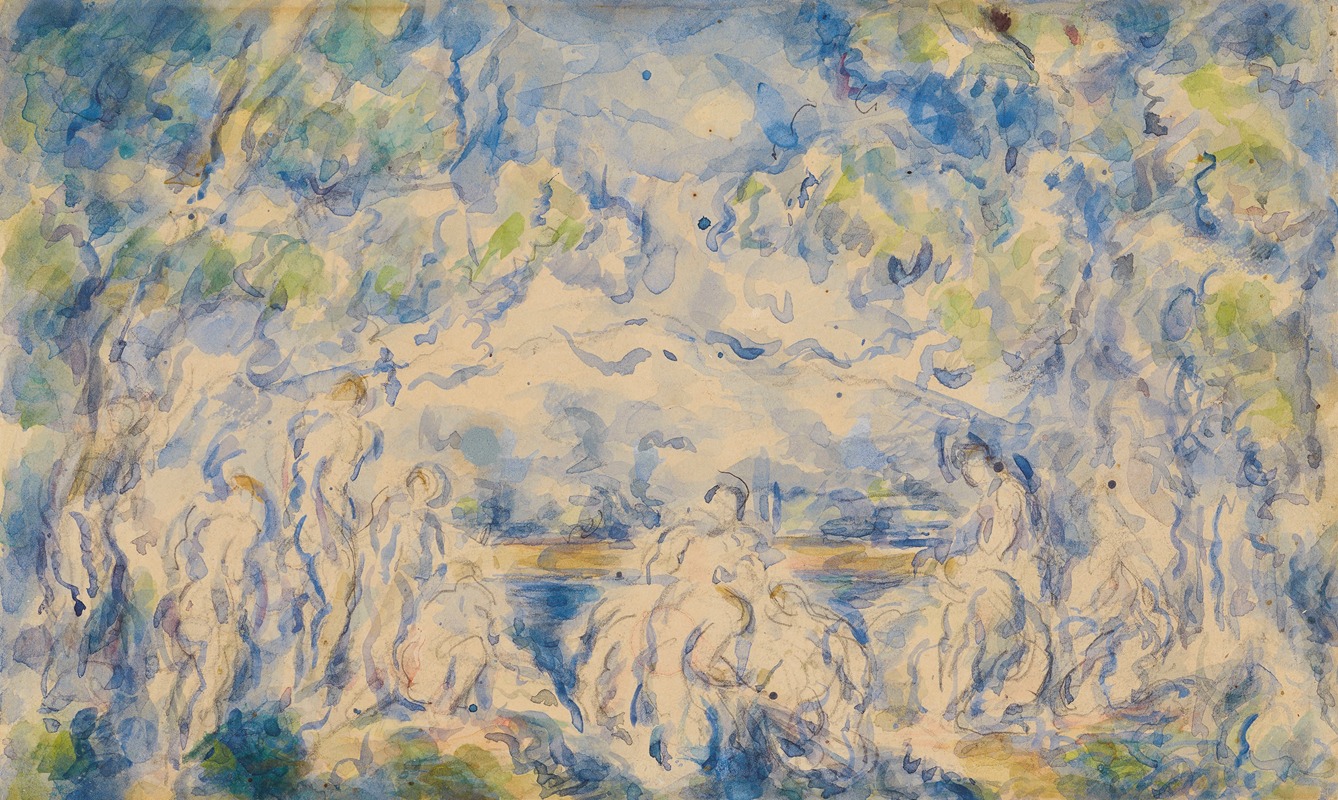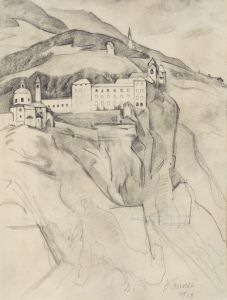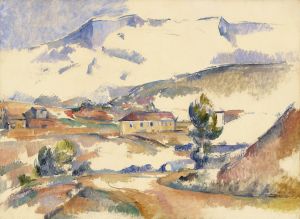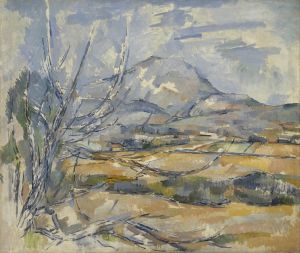
Baigneuses devant une montagne
A hand-painted replica of Paul Cézanne’s masterpiece Baigneuses devant une montagne, meticulously crafted by professional artists to capture the true essence of the original. Each piece is created with museum-quality canvas and rare mineral pigments, carefully painted by experienced artists with delicate brushstrokes and rich, layered colors to perfectly recreate the texture of the original artwork. Unlike machine-printed reproductions, this hand-painted version brings the painting to life, infused with the artist’s emotions and skill in every stroke. Whether for personal collection or home decoration, it instantly elevates the artistic atmosphere of any space.
Paul Cézanne's Baigneuses devant une montagne (translated as Bathers in Front of a Mountain) is a painting attributed to the French Post-Impressionist artist Paul Cézanne. Cézanne, widely regarded as a pivotal figure in the transition from 19th-century Impressionism to 20th-century modernism, frequently explored themes of bathers and landscapes throughout his career. This particular work is part of his broader series of paintings depicting bathers, a subject he revisited multiple times, especially during the later stages of his life.
The painting features a group of bathers set against a mountainous backdrop, a composition that reflects Cézanne's characteristic blending of the human figure with the natural environment. The figures are rendered in a simplified, almost sculptural manner, emphasizing form and structure over fine detail. The landscape, dominated by the mountain, is painted with Cézanne's distinctive use of color and brushwork, creating a sense of depth and harmony between the figures and their surroundings.
Cézanne's bather series is often interpreted as an exploration of timeless, universal themes, such as the relationship between humanity and nature. His approach to these works was not focused on realism or narrative but rather on the interplay of shapes, colors, and spatial relationships. This aligns with Cézanne's broader artistic philosophy, which sought to capture the underlying structure and essence of his subjects.
The exact date of Baigneuses devant une montagne is not definitively known, but it likely belongs to the later period of Cézanne's career, when he was increasingly preoccupied with monumental compositions and the integration of figures into landscapes. During this time, Cézanne's work became a significant influence on the development of modern art, inspiring artists such as Pablo Picasso and Henri Matisse.
As with many of Cézanne's works, the painting is notable for its innovative use of color and form, which broke away from traditional artistic conventions. The figures and the landscape are constructed through a series of overlapping planes and subtle tonal variations, creating a sense of unity and balance. This approach reflects Cézanne's desire to "treat nature by the cylinder, the sphere, the cone," as he famously described his method of simplifying natural forms into geometric shapes.
The current location of Baigneuses devant une montagne is not specified in this context, as Cézanne's works are held in various public and private collections worldwide. However, his bather paintings are widely studied and celebrated as key contributions to the history of Western art.
This painting exemplifies Cézanne's enduring legacy as an artist who bridged the gap between Impressionism and the emerging movements of the 20th century, laying the groundwork for Cubism and other modernist styles.


















